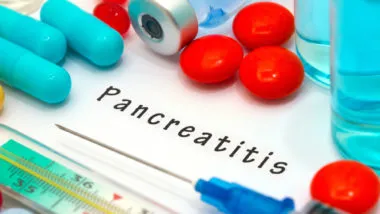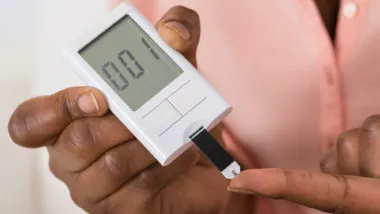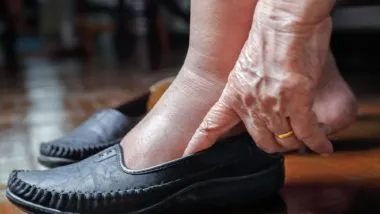 Jardiance is part of a group of medications known as SGLT2 inhibitors. This stands for sodium glucose cotransporter 2 inhibitors and this is a class of diabetes medication that has been tied to a twice higher risk of losing a foot or leg to amputation.
Jardiance is part of a group of medications known as SGLT2 inhibitors. This stands for sodium glucose cotransporter 2 inhibitors and this is a class of diabetes medication that has been tied to a twice higher risk of losing a foot or leg to amputation.
Many of the patients who have also used certain drugs in the SGLT2 inhibitor class might not realize that in addition to the increased possibility to cause amputations, these drugs have been connected with a higher than normal risk of diabetic ketoacidosis.
Are There Any Posted Risks About the Jardiance Possibility to Cause Amputations?
According to Endocrine Web, a warning released in 2017 by the Food and Drug Administration shows that two big clinical trials had found a connection between a higher risk of leg and foot amputations and the use of drugs such as canagliflozin, another popular SGLT2 inhibitor medication. The agency added new warnings—including a black box warning, the FDA’s most serious label—to be added to canagliflozin labels with an update about this risk.
Other studies have not found an amputation risk but a growing number of patients have reported their adverse event concerns to the FDA.
However, the FDA has released a safety warning about another serious side effect linked with SGLT2 inhibitors: a serious infection of the genital area called necrotizing fasciitis of the perineum, also known as Fournier’ gangrene. It is also sometimes referred to colloquially as flesh-eating disease, due to the way the infection kills off the body’s soft tissue. Along with that 2018 FDA warning, the agency also required that the drugs’ manufacturers add a warning about this risk to the prescribing information and the patient Medication Guide.
Why Is There a Potential Amputation Risk?
According to some researchers, the increased risk of amputations could be tied to the way that SGLT2 inhibitors work in the body. Many people who already have diabetes suffer from poor circulation problems with their feet and legs and are already at a higher risk for amputation than most people.
Patients rely on drugs like Jardiance to help reduce the symptoms of diabetes, and avoid serious complications like diabetic amputation, so the possibility that the drug could worsen one of these symptoms may be concerning.
It is not proven that Jardiance increases amputation risk, but looking into some of the risk factors that already put diabetics at an elevated amputation risk may clarify how Jardiance and amputations may be linked.
Health.com explains that neuropathy, or nerve damage, is one complication of diabetes. Nerve damage can occur due to high blood sugar levels and usually occurs first in the extremities of the body, like the hands and feet. If nerves are damaged, a patient cannot feel pain as easily as someone without nerve damage.
This means that a diabetic person with nerve damage may not realize that they have suffered an injury, and may not take steps to treat or prevent it. To make matters worse, diabetes patients are less able than others to heal wounds.
If a person with diabetes does suffer an injury, it can become infected if the wound is not able to heal. This can necessitate an amputation, to stop the infection from spreading.
Diabetic foot ulcers, a kind of wound on the foot, they are the most common reason why a diabetes patient is hospitalized. Unfortunately, they pose a serious problem for diabetes patients. Around 15 percent of diabetes patients will develop a foot ulcer during their life, and once an ulcer develops, the condition can worsen dramatically.
Around 24 percent of diabetics who develop a foot ulcer will then require amputation, explains Health.com.
Because Jardiance causes patients to excrete more urine than they would normally, a patient may become dehydrated more easily. Dehydration constricts blood vessels and reduces blood flow. Reduced blood flow can further impair healing and increase a patient’s risk for infection and can in turn, increase their risk of amputation.
If the blood sugars are very elevated, a patient could get more dehydrated and this could cause further problems with blood circulation to lower extremities like the feet or legs. Not all patients will develop a high risk of amputation due to using Jardiance, however, any patients who are experiencing unexplained medical side effects should report these concerns to their doctors immediately.
What Studies Have Been Conducted?
 The results from Danish and Swedish registries and the possible connection between amputations and SGLT2 inhibitors was published in the BMJ Journal in Nov. 2018. Of particular interest in this publication was the fact that Jardiance and Farxiga accounted for 99% of the drug use in this study analyzing patients taking the medications between 2013 and 2016.
The results from Danish and Swedish registries and the possible connection between amputations and SGLT2 inhibitors was published in the BMJ Journal in Nov. 2018. Of particular interest in this publication was the fact that Jardiance and Farxiga accounted for 99% of the drug use in this study analyzing patients taking the medications between 2013 and 2016.
In February of 2017, the European medicines agency first warned about a possible increased risk of lower limb amputations, primarily affecting the toes for those people using Invokana, Jardiance, and Farxiga, according to medpagetoday.com.
Should I Stop Taking My Medication?
No patient should discontinue their use of their diabetes medication until they have had an opportunity to speak with their physician about next steps. Not every patient who is currently using the drug will need to discontinue their treatment regimen.
Since diabetics are already at risk for serious issues related to amputation, the selection of medicine to help manage the underlying condition should be done carefully. Discussing the options with a physician can help a patient to determine whether or not that person is already considered to be at high risk for amputations.
Filing a Lawsuit Over Jardiance Side Effects
A growing number of people are coming forward with allegations that drug makers either knew or should have known about the risks associated with Jardiance and other SGLT2 inhibitor medications.
If you have already undergone an amputation and you believe it was due to risk factors from Jardiance that you did not know about before starting your course of medication treatment, consider speaking with a lawyer.
Of course, filing a lawsuit cannot take away the pain and suffering caused by these complications, nor can it bring a loved one back to life, but it can at least help to alleviate the financial burden incurred by medical expenses, lost wages, and more.
Filing a lawsuit can be a daunting prospect, especially while dealing with health complications, so Top Class Actions has laid the groundwork for you by connecting you with an experienced attorney. Consulting an attorney can help you determine if you have a claim, navigate the complexities of litigation, and maximize your potential compensation.
ATTORNEY ADVERTISING
Top Class Actions is a Proud Member of the American Bar Association
LEGAL INFORMATION IS NOT LEGAL ADVICE
Top Class Actions Legal Statement
©2008 – 2025 Top Class Actions® LLC
Various Trademarks held by their respective owners
This website is not intended for viewing or usage by European Union citizens.
E-mail any problems with this form to:
[email protected].
Oops! We could not locate your form.













Can jardince cause you to have an ulcer on your toes
I was taking stegalatro from 2018 till I got a ulcer osteomyelitis and a second toe amputation while in stegalatro. My doctor continued me on stegalatro till my insurance changed me to jardiance. I was on jardiance till June of 2024 due to another ulcer and infection in my right foot while on jardiance. They finally took me off jardiance after I brought up the increased risk for ulcers , amputation and infections .
Big toe amputation linked to Jardiance